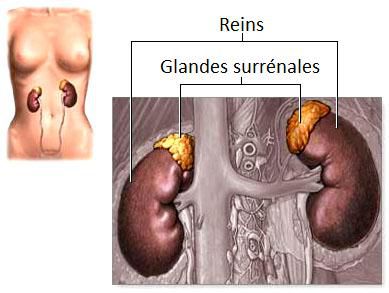-
 AVI
AVI
-
 Vertical wind shear
Vertical wind shear
-
 Starsem
Starsem
-
 Prime number
Prime number
-
 Apnoea
Apnoea
-
 Germanium
Germanium
-
 CloudSat
CloudSat
-
 Dextrorotatory
Dextrorotatory
-
 Brightening
Brightening
-
 Liquidus
Liquidus
-
 Mars Odyssey
Mars Odyssey
-
 Social network
Social network
-
 WYSIWYG
WYSIWYG
-
 Computer network
Computer network
-
 Pedicellariae
Pedicellariae
-
 Piconet
Piconet
-
 Parsnip
Parsnip
-
 Bioenergy
Bioenergy
-
 Green sea turtle
Green sea turtle
-
 Clausius-Clapeyron relation
Clausius-Clapeyron relation
-
 Interstellar dust
Interstellar dust
-
 Allergen
Allergen
-
 Thermal bridge
Thermal bridge
-
 Sexual dimorphism
Sexual dimorphism
-
 Quartz
Quartz
-
 Flocking
Flocking
-
 Lamellar
Lamellar
-
 Redundant Code
Redundant Code
-
 Excoriation
Excoriation
-
 Exosome
Exosome
Adrenal glands
The adrenal glands belong to the endocrine system.
Function of the adrenal glands
As the name suggests, the adrenal glands are located above the kidneys. Their role is to secrete hormones involved in different processes.
The outer part of the gland, the adrenal cortex, secretes glucocorticoids (cortisone). Among other things, these hormones are responsible for releasing stored glucose and therefore providing energy to the body. The mineralocorticoids (aldosterone) are responsible for potassium and sodium homeostasis. The gland also produces androgens (testosterone), which are also produced by the gonads.
The internal part of the adrenal glands, the adrenal medulla, secretes catecholamines, a group of hormones including adrenaline and noradrenaline. These hormones are involved in the stress response by increasing blood pressure and heart rate.
Structure of the adrenal glands
There are two adrenal glands, which are triangular in shape, and each weighs approximately 5 grams.
They are composed of two different superimposed structures, the central adrenal medulla, which is highly vascularised, and the surrounding adrenal cortex.
 The adrenal glands, located above the kidneys, play an important metabolic role. © DR
The adrenal glands, located above the kidneys, play an important metabolic role. © DR
Latest
Fill out my online form.



